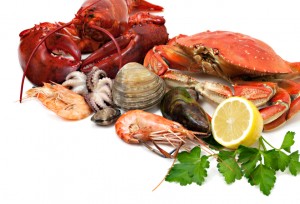In December 2011, the two United States senators from Louisiana asked the Food and Drug Administration (FDA) to declare that seafood harvested from the Gulf of Mexico is safe to eat following the 2010 Deepwater Horizon oil spill. The FDA has said that seafood from the Gulf is safe to eat, but the senators want this stance more widely publicized.
 Senator David Vitter (R-LA) said, “The FDA is in the best position to provide a much-needed boost to our fishermen by publicly and vigorously defending the safety of Gulf seafood.” Senators Mary Landrieu (D-LA), Kay Bailey Hutchinson (R-TX), Jeff Sessions (R-AL), Richard Shelby (R-AL), John Cornyn (R-TX), Thad Cochrain (R-MS), and Roger Wicker (R-MS) have all signed Vitter’s letter.
Senator David Vitter (R-LA) said, “The FDA is in the best position to provide a much-needed boost to our fishermen by publicly and vigorously defending the safety of Gulf seafood.” Senators Mary Landrieu (D-LA), Kay Bailey Hutchinson (R-TX), Jeff Sessions (R-AL), Richard Shelby (R-AL), John Cornyn (R-TX), Thad Cochrain (R-MS), and Roger Wicker (R-MS) have all signed Vitter’s letter.
All of the FDA’s tests have shown that harmful chemicals in the seafood are at levels far below established safety thresholds. But are those thresholds set at the proper level?
The Natural Resources Defense Council (NRDC) questions whether the “safety thresholds” are set low enough to protect vulnerable populations, such as children, pregnant women, and those with chronic illnesses. For instance, the FDA program used a body weight of 176 pounds for the “average consumer” when establishing “safe thresholds”.
This obviously excludes children and most women. No one knows if the FDA considered that pregnant women and children are more vulnerable to environmental toxins and poisons than the average person.
The NRDC also says that there are many people who are eating more Gulf seafood than the FDA assumed when it set the thresholds. The FDA used a survey of seafood consumption rates in fishing communities to calculate the thresholds.
The amount of shrimp eaten by a “typical” consumer living in a fishing community is one meal per week of 3.1 ounces of shrimp, or about 12 jumbo shrimp a month, according to the FDA survey. Many people say that amount is too low, since there may be a dozen shrimp in one serving of Jambalaya or Shrimp Scampi.
The BP well blowout released 200,000,000 gallons of crude oil in the Gulf of Mexico. Two million gallons of toxic dispersants, which were used to control the spread, were poured into the water. Many of these dispersants were applied directly to the well in the deep ocean, which is something industry has never done before. One of those chemicals, Corexit, wasn’t part of the FDA’s initial tests. The government agency changed their policy on Corexit testing after widespread criticism.
It may take years of studies and research to discover if the oil spill has caused long-term damage to Gulf seafood and if any consumers have been harmed. The Criminal investigation into BP, Transocean, and Halliburton continues. And scientists and environmentalists are keeping a close eye on the Gulf of Mexico, seafood harvested from those waters, and nearby residents.





What about the people who eat seafood every day? How does that add up over the next 20 years? Does that just equate to “we are all going to die someday anyway” ??
Good question. I don’t agree with the FDA’s assessment. I think that many people, especially in the Gulf region, eat far more seafood than they state. I know that whenever I’m in those states on vacation, I eat a ton of seafood, and I would if I lived there.
And there are different ways to die. Dying before your time of some type of preventable cancer or other disease is, I believe, a tragedy.